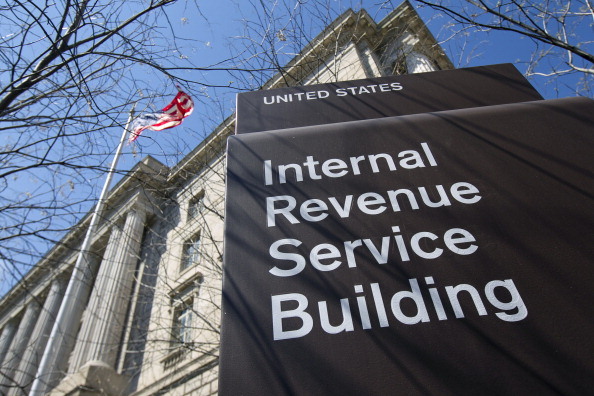A group of ten IRS stakeholder organizations, led by the American Institute of CPAs, has recommended the creation of a Practitioner Services Division as one of a number of suggestions on implementing the Taxpayer First Act.
AICPA president and CEO Barry Melancon considers the collaborative efforts of the organizations involved to be a key indicator of the broad support for the recommendations outlined in the letter. “Stakeholders from across the profession are facing the same challenges and together, we agreed on solutions to address the top issues faced by practitioners everywhere,” he said. “The recommendations outlined in this letter better empower practitioners to help their customers and,ultimately, help all taxpayers.”
In addition to the AICPA, the group includes Alliantgroup, HR Block, the Latino Tax Professionals Association, the National Association of Enrolled Agents, the National Association of Tax Professionals, the National Conference of CPA Practitioners, the National Society of Tax Professionals Padgett Business Services, and Prosperity Now.
In their suggestions to the IRS, the group noted that they are providing “collective input” as the service prepares these reports and “most importantly,” recommends that the IRS establish a new Practitioner Services Division as an integral part of the organizational modernization.
“The IRS is clearly taking the requirements of the Taxpayer First Act seriously, and we appreciate this commitment,” said Robert Kerr, EA, executive vice president of the NAEA. “NAEA is glad to join with the practitioner community to ensure the IRS provides improved tools for practitioners, better training for IRS personnel, and a renewed vision for service to taxpayers.”
“I see this as a positive set of interactions between the IRS and the stakeholder groups,” agreed Roger Harris, president of Padgett Business Services. ”I give the IRS credit for reaching out, holding focus groups and seeking input from us. And the AICPA did a great job of taking the comments of all the groups and melding them into a document we could all support.”
In its recommendation for a dedicated Practitioner Services Division, the group noted that practitioners play a vital role in tax administration.
“Without a dedicated ‘executive-level’ Practitioner Services Dvision that can participate in the design of key practitioner-impacting policies and programs, the IRS will not achieve the success it desires with the tax preparer community,” the group stated. “At a minimum, the Practitioner Services division should: engage with the tax professional community; ensure practitioner feedback is acted upon through a liaison with all major operating divisions; maintain robust practitioner hotlines; and provide an online tax professional account.
In the works a while
The ideas included in suggestions for an IRS redesign and a Practitioner Services Division have been germinating at the AICPA for some time. In May 2015, its Governing Council adopted a resolution urging policy makers to “make recommendations that enable the IRS to achieve its stated mission and to transform it into a modern functioning, evolutionary, and respected federal agency for the 21st century.”
In early 2016, AICPA leadership participated in a “fly-in” to Washington, D.C., to meet with key members of congress and the IRS to discuss the unacceptable state of taxpayer service and to launch a dialogue about the IRS of the future.
On April 3, 2017, several stakeholder organizations collaborated and developed the AICPA-spearheaded efforts to identify and promote realistic and meaningful recommendations for improving IRs governance and the agency’s oversight structure. The efforts resulted in a framework presented to Congress. The AICPA further developed the framework, resulting in a plan for a dedicated practitioner services division.
But the proposed Practitioner Services Division is more than just the work of the AICPA, according to Melanie Lauridsen, senior manager — AICPA Tax Policy Advocacy.
“It comes down to all tax professionals,” she said. “Close to 60 percent of taxpayers file their returns through a professional preparer. When we reach out to the IRS, we know what action we need them to take. We’re calling because only the IRS can resolve the issue. If they’re able to resolve it through a Practitioner Services Division, it’s helpful to all taxpayers.”
“Over half of all taxpayers use a professional preparer to file their returns,” said Steve Mankowski, immediate past president and co-chair of NCCPAP. “We provide enough services for taxpayers that we need something more than just a toll-free number to call,” he said. “Part of the frustration was getting transferred when the person you were speaking with was not able to answer your question. Then you had to fax information over to the next person.”
“The proposed division would have teams, or ‘pods,’ which would be able to handle more complicated matters,” he said. “The person on the phone would be able to hand off the call to someone with a skill set in a particular area of expertise, and when they do hand off, the practitioner is already authenticated so they don’t have to go through the process from the beginning.”
In the letter, the tax practitioners highlighted other key priorities in each of the three areas in which reports are being submitted to Congress:
- Comprehensive Customer Service Strategy. The IRS’s comprehensive customer service strategy should provide its customers with access to empowered employees, timely information, and tailored resources.
- Comprehensive Training Strategy. The IRS’s strategy on training should include customer-focused subject matters, a consistent and high-quality format, and the leveraging of trained employees.
- IRS Redesign Plan. The IRS’s comprehensive plan to redesign the organization should incorporate a customer-focused culture, provide an integrated technological infrastructure, and create a dedicated Practitioner Services Division.
There needs to be one more letter, according to Harris.
“If any of this is going to work, there needs to be an additional letter to Congress telling them to give the IRS the money they need to implement the plan,” he said.